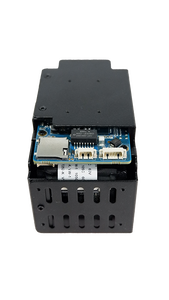(60 products available)


































































































































































































Suppliers provide these ONVIF PTZ camera modules in various types and configurations to meet different requirements. Store owners should consider the features and benefits of each type PTZ camera to fulfill the business clients’ preferences.
PTZ-enabled camera modules are used in these popular security cameras with zoom. It allows remote control of the camera's position and direction. Its functionalities are zooming in or out and panning or tilting. These PTZ functions are possible via a preset interface or a control joystick.
PTZ security camera modules with different zoom capabilities can suit various clients' surveillance needs. Those who want to capture near-field images without getting physically close prefer optical zoom cameras. While cameras with digital zoom are less expensive, they allow cropping and zooming in on images during footage playback. They can be attached to fixed-focus lenses.
Clients requiring efficient surveillance in low-light areas will benefit from infrared PTZ camera modules. These cameras automatically switch to night mode when lighting declines. Most have IR LEDs to achieve up to 30 meters of clear monochrome vision at night. This feature is vital for 24/7 surveillance in vulnerable areas.
For comprehensive coverage, select 360-degree model cameras. They are excellent at eliminating blind spots and ensuring every area is monitored effectively. Combine these with other features for a complete system. Depending preferences, consider auto-tracking or preset patterns for efficient monitoring.
Clients who don't need fine details will be satisfied with standard PTZ camera modules. These offer reliable coverage at 720p. Though not as sharp as HD, they're essential for basic surveillance needs, such as covering parking lots. Choose these when clients have limited budget considerations.
Advanced PTZ camera modules come with people counting, line crossing, or intrusion detection functions. These smart video analytics enhance security systems by notifying users of possible threats. They are especially valuable in businesses where real-time alerts and proactive measures are essential.
Selecting the suitable PTZ camera module will ensure clients obtain reliable monitoring while fulfilling their requirements and budgets.
These are the key features that will entice clients to the ONVIF PTZ camera modules:
These are the business scenarios where the PTZ camera modules are frequently used:
Big retail stores use the PTZ camera modules to improve their surveillance systems. The cameras can scan and cover large shopping areas, offering the workers and customers essential security.
Oil refineries, power plants, and water treatment facilities all have vital assets. Smart PTZ cameras help security personnel monitor activities, ensuring timely responses to suspicious actions or safety policy violations.
Construction sites are risky and costly. PTZ cameras will be helpful in remote monitoring of personnel's safety, equipment security, and timely detection of theft or vandalism.
Transportation centers like airports, train stations, and bus depots use these cameras to detect and prevent illegal acts. Quick monitoring enhances passenger safety and assures cost-effective operations.
Outdoor cameras work perfectly in installations at locations where conventional monitoring may be impractical or risky. Users can check remotely and verify the status without going out to these places.
In manufacturing plants, PTZ cameras check products on conveyor belts, instruct operators, and even use AI to identify faulty products. Their zooming function ensures thorough checking and efficient production.
Last, maintenance teams scan expensive machinery in factories, oil rigs, and mines to check for wear and fix issues proactively. 3D PTZ cameras can also provide different angles to help in equipment monitoring.
Although these cameras have many features, there is no warranty they will satisfy everyone. Here are some vital aspects to consider when purchasing these cameras.
First, consider how well it will operate in less than optimal lighting conditions. Most have infrared night vision to monitor areas with no light. This feature allows watching and recording clear images at night.
Next, check the zoom power and image sharpness. It is crucial for detecting and identifying items at a distance. Zooming lenses help to enlarge objects without distortion. However, digital zoom may only crop and enlarge objects. So give priority to optical zoom.
Automated or uncontrolled PTZ cameras can scan pre-defined areas and routinely cover their blind spots. These models track people and other moving objects, then send alerts when programmed to do so.
Other features to consider are waterproof ratings (IP66 or 67) and installation options (indoor and outdoor). Finally, check the warranty, as more reliable vendors offer extended coverage for their CCTV camera systems.
A1. Use PTZ when active monitoring is possible. They are ideal for large areas requiring real-time surveillance. Fixed cameras cannot move. Go for PTZ when the application demands flexibility and coverage of changing activities.
A2. Zooming adjusts the lens to focus on an object while keeping its quality. On the other hand, digital only crops the image. It captures the object and then enlarges it, which leads to pixelation.
A3. Yes, they do. However, only those with weatherproof casings are suitable for outdoor use. They are also weather-resistant and suitable for various outdoor conditions.
A4. Most recent PTZ cameras have infrared technology, so they monitor spaces at night. The effectiveness will rely on the camera's range and infrared strength.
A5. Yes, they support various camera brands and systems from different producers. This allows customers to seamlessly integrate their surveillance systems.